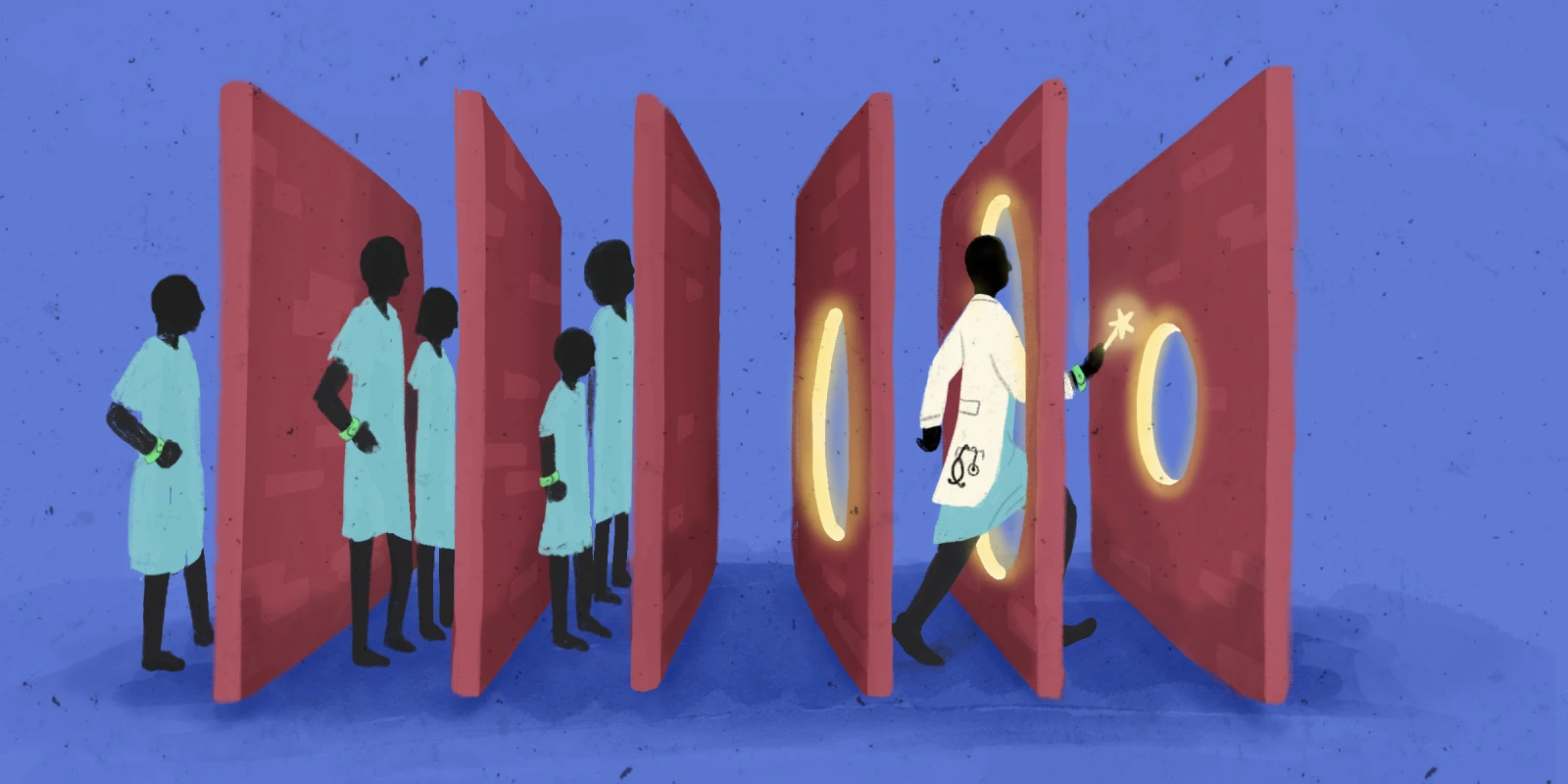As I walked up to the check-in window, I braced myself for a familiar conversation.
“Who referred you?”
“Er, no one.”
“Well, who should we send the results to? Who’s your PCP?”
“Uh, I don’t have one. Me, I guess. I’m actually a PCP. You can just fax me the results.”
I’ve lived in Ohio for going on six years. Before that, I bounced around, from Indiana in undergrad to Georgia in medical school. My last true “PCP” was the doctor I had prior to med school, to have my TB test read. I got a call a few years back asking me to schedule an annual wellness visit with him, to which I sheepishly replied it was probably OK to take me off their list, as I had moved out of state almost a decade ago. Since then, I’ve found myself in the same state as many healthy people my age: without a regular primary care doctor.
My first excuse was uncertainty; my time as a student and later as a trainee was transient, and I figured I’d be moving somewhere new in a few years. It hardly seemed worthwhile to spend some of my non-working hours in a waiting room, presuming I could find an in-network doctor who wasn’t also a colleague or a preceptor in the first place. After I graduated, it again was pushed to the backburner in favor of focusing on my wife’s health during her pregnancy and the birth of our son. Now several years later in practice, I still find myself doctor-less and somewhat out of excuses.
I will be the first to admit that I’ve been fortunate. I’m healthy, take no medications, exercise regularly, and eat a balanced diet. On the rare occasion I do need something, it hasn’t presented much of a problem. Most minor conditions I feel confident managing myself. When I need to, I’m able to get in to see a specialist just about anywhere with a phone call. When I had a nagging elbow injury, I showed up to the physical therapist without an order, and all was well. I even ordered a direct-to-consumer lipid panel for myself online without a prescription, confident in my ability to interpret my own test results. With that level of access to care, the idea of calling my doctor to schedule an appointment to get a referral or an order for any of the above seems positively byzantine.
My wife will attest that the strategy of being PCP-less has drawbacks. A few months ago, I got a popcorn kernel stuck on my tonsil. I was able to self-extricate it with the assistance of a makeshift headlamp composed of an elastic band and a penlight, some forceps, and a bathroom mirror. I followed this up with a visit to an ENT’s colleague’s office several days “post-op,” certain that I had somehow injured myself worse. After a thorough examination, he assured me I had done no lasting damage and in fact successfully removed the kernel (a tremendous and unneeded boost to my ego). After this commendation, he sternly warned me not to try it again. Even if I reflect on how things would have been different if I did have a PCP, I’m not convinced it would have helped me. The same episode for a patient of mine might have meant an ER visit or a frustrating back-and-forth prior auth with insurance to get to a specialist. For me, sans-PCP, it took a phone call and a lunch hour.
As a physician, I feel like I have a cheat code: the insider knowledge of how the system works, and the prescription pad to make it happen. Most patients, however, aren’t me. They can’t prescribe, and they don’t have a colleague who can squeeze them in at lunch. They send me their portal messages and leave voicemails asking for an antibiotic prescription or a referral or a refill, even if they haven’t been seen in years. I don’t blame them, and I don’t think they’re acting irrationally. To an extent, I enjoy and expect the same care myself – convenient, on my schedule, and at a reasonable price. The problem lies in the tension between this and the economic reality that a lot of this work is unreimbursed, and unreimbursed work doesn’t keep the lights on. Fail to address these requests promptly, and patients will go elsewhere. Give in to too many for free, and face death by portal message. More than ever, today's patient seems to expect the same level of white-glove care and access that I feel I already enjoy, even without a PCP.
I don’t think that’s unreasonable, and recent innovations in value-based contracting and the direct primary care movement may even make it possible someday. But our reality is a world of fewer and fewer primary care doctors, squeezed more and more by declining reimbursement and ever-increasing panel size. I’m stuck concluding that the kind of care I currently enjoy without the “benefit” of a PCP is only a pipe dream for most. With that in mind, I’ll hold off on scheduling that new patient appointment for myself. That, and avoid popcorn kernels.
What are your opinions on doctors referring themselves to other physicians or acting as their own PCPs? Share in the comments.
Dr. Brennan Kruszewski is an internal medicine physician in Hudson, Ohio. He is passionate about transforming primary care. He enjoys spending time outdoors, especially biking the trails of Northeast Ohio. He is active on social media, and blogs at his personal website. Dr. Kruszewski is a 2024-2025 Doximity Op-Med Fellow. Opinions expressed here are his own and not the opinions of his employer.
Illustration by Diana Connolly







